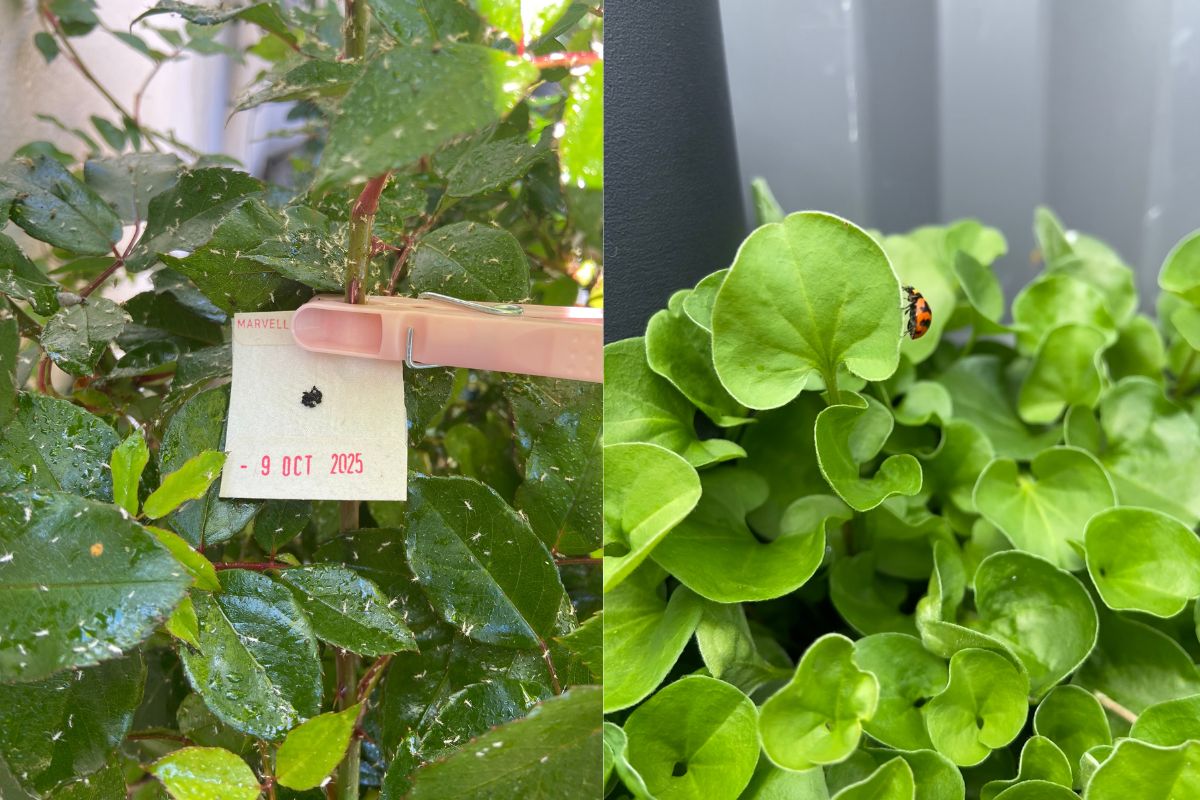Scientists have published a new report which underlines the ten golden rules of reforestation for optimal outcomes. "If you plant the wrong trees in the wrong place you could be doing more harm than good," said lead researcher Dr Kate Hardwick of the Royal Botanic Gardens in Kew, London.

Based on some of the most recent ecological research, scientists have proposed ten guidelines for forest ecosystem restoration that maximises rates of carbon sequestration and biodiversity recovery, while improving livelihoods:
1. Protect existing forest first
Old forests are more resilient to catastrophic weather events and fire, and are known to soak up carbon better than younger trees. Intact, old‐growth forest is a major long‐term carbon sink due to its complex structure, large trees, accumulating soils and relative resilience to fire and drought (Luyssaert et al., 2008; Maxwell et al., 2019). Forests are also essential reservoirs of water and nutrients. The IPCC acknowledges that ‘most [destroyed] forest ecosystems will take longer than 100 years to return to the level of biomass, soil and litter pools [found in forest in an] undisturbed state’ (Aalde et al., 2006).
2. Work together (involving all stakeholders)
Getting local people engaged and on board with tree planting projects is proven to be key to future success, as they continue to nurture and protect their forests into the future. For the best possible outcomes in both forest protection and reforestation, it is vital to include local communities from the start of the planning stage.

Getting young people involved in tree planting programs will increase community engagement (Image credit: Unsplash)
3. Aim to maximize biodiversity recovery to meet multiple goals
Reforestation sets several goals including climate change mitigation, biodiversity conservation, food security and soil stability. Achieving high levels of biodiversity and biomass, through the native forest approach, enables multiple outcomes to be delivered simultaneously. While restoring biodiversity levels with the exact species of the original forest may not be feasible, decisions on choosing other native species should be made with caution and based on sound science to avoid losing locally important species.
The ancient forests which provide habitat for Black cockatoos are under threat in Western Australia (Image credit: Unsplash)
4. Select appropriate areas for restoration
Most forest restoration programs involve an evaluation at landscape level or below. For best results, researchers recommend making decisions based on a combination of historical, ecological and socio-economic factors at different spatial scales.
5. Use natural regeneration wherever possible
In suitable sites and landscape conditions, natural regeneration can be cheaper and more effective than tree planting. However, this approach is unsuitable for certain ecosystems, for example those in ‘old, climatically buffered infertile landscapes’ (‘OCBILs’, sensu Hopper, 2009) found in biodiverse regions, such as the southwestern Australian biodiversity hotspot. In such landscapes, natural recolonization processes are incapable of reinstating ecosystems once the native vegetation has been removed, and substantial replanting and seeding are therefore required (Koch & Hobbs, 2007).
Native Australian grass trees in an established forest (Image credit: Unsplash)
6. Select species to maximize biodiversity
Plant a mix of species, prioritising natives and favouring mutual interactions. In heavily degraded sites, it is important to select species based on their ability to establish in unfavourable conditions which might include drought, compacted soil and competitive weeds. Invasive exotic species should never be planted - they have long term effects on the environment, compete with native species, reduce biodiversity and often reduce water availability (Dyderski & Jagodziński, 2020; Scott & Prinsloo, 2008).
7. Use resilient plant material (with appropriate genetic variability and provenance)
To ensure the survival of a resilient forest, it is critical to use plants and seeds with appropriate levels of genetic diversity. Using seeds with low genetic diversity generally lowers the resilience of restored populations through reduced evolutionary potential and problems with inbreeding depression, creating forests which may be disease-prone and vulnerable to environmental changes (Thomas et al., 2014). Collecting seeds across the full extent of the parental population is a key determinant of genetic diversity in planted forests. In some situations, more distant provenances may be considered to try and match conditions anticipated as a result of future global climate change scenarios. This is known as predictive provenancing.
8. Plan ahead for infrastructure, capacity and seed supply
Careful sourcing of seeds and seedlings should follow seed quality standards and use reputable external suppliers. Some project managers may choose to develop their own seed collection, storage and propagation capacity to meet project requirements for resilient and genetically diverse plants.
9. Learn by doing (using an adaptive management approach)
Planning decisions should be made by blending both scientific and indigenous local knowledge. International standards and scientific literature can give general information, but the traditional knowledge acquired over generations of living close to the forest can be invaluable for improving success of reforestation programs. Adopting small scale trials ahead of large scale projects can help to guide species choices and test the effectiveness of proposed approaches.
10. Make it pay (ensuring the economic sustainability of the project)
The long term sustainability of forest restoration projects depends on income streams generated from it exceeding those which might be achieved from alternative land uses. It is also essential that this income is shared fairly between all stakeholders, especially some of the poorest. Marketing environmental services and eco tourism from restored native forest is often perceived to be more difficult than generating a quick buck from the sales of forest products from livelihood forests. However monoculture plantations leave farmers vulnerable to fluctuations in a single commodity market price, so the establishment of a biodiverse forest with multiple revenue opportunities can drive both ecological security and economic security.
References
Aalde, H., Gonzalez, P., Gytarsky, M., Krug, T., Kurz, W. A., Ogle, S., Raison, J., Schoene, D., Ravindranath, N. H., & Nagmeldin G. E. (2006). Chapter 4. Forest lands. In H. S. Eggleston, L. Buendia, K. Miwa, T. Ngara, & K. Tanabe (Eds.), 2006 IPCC guidelines for national greenhouse gas inventories. Volume 4: Agriculture, forestry and other land use.
Brancalion, P. H. S., Bello, C., Chazdon, R. L., Galetti, M., Jordano, P., Lima, R. A. F., Medina, A., Pizo, M. A., & Reid, J. L. (2018). Maximizing biodiversity conservation and carbon stocking in restored tropical forests. Conservation Letters, 11(4), 1– 9.
Di Sacco, A., Hardwick, K., Blakesley, D., Brancalion, P., Breman, E., Rebola, L., Chomba, S., Dixon, K., Elliott, S., Ruyonga, G., Shaw, K., Smith, P., Smith, R., & Antonelli, A. (2021). Ten golden rules for reforestation to optimize carbon sequestration, biodiversity recovery and livelihood benefits. Global Change Biology, Jan 25.
Dyderski, M. K., & Jagodziński, A. M. (2020). Impact of invasive tree species on natural regeneration species composition, diversity, and density. Forests, 11(4), 1– 20.
Heilmayr, R., Echeverría, C., & Lambin, E. F. (2020). Impacts of Chilean forest subsidies on forest cover, carbon and biodiversity. Nature Sustainability, 3(9), 701– 709.
Hopper, S. D. (2009). OCBIL theory: Towards an integrated understanding of the evolution, ecology and conservation of biodiversity on old, climatically buffered, infertile landscapes. Plant and Soil, 322(1), 49– 86.
Koch, J. M., & Hobbs, R. J. (2007). Synthesis: Is Alcoa successfully restoring a jarrah forest ecosystem after bauxite mining in Western Australia? Restoration Ecology, 15(SUPPL. 4), 137– 144.
Lewis, S. L., Wheeler, C. E., Mitchard, E. T. A., & Koch, A. (2019). Regenerate natural forests to store carbon. Nature, 568, 25– 28.
Luyssaert, S., Schulze, E. D., Börner, A., Knohl, A., Hessenmöller, D., Law, B. E., Ciais, P., & Grace, J. (2008). Old‐growth forests as global carbon sinks. Nature, 455, 213– 215.
Maxwell, S. L., Evans, T., Watson, J. E. M., Morel, A., Grantham, H., Duncan, A., Harris, N., Potapov, P., Runting, R. K., Venter, O., Wang, S., & Malhi, Y. (2019). Degradation and forgone removals increase the carbon impact of intact forest loss by 626%. Science Advances, 5(10), eaax2546.
Scott, D. F., & Prinsloo, F. W. (2008). Longer‐term effects of pine and eucalypt plantations on streamflow. Water Resources Research, 45(7), 1– 8.
Thomas, E., Jalonen, R., Loo, J., Boshier, D., Gallo, L., Cavers, S., Bordács, S., Smith, P., & Bozzano, M. (2014). Genetic considerations in ecosystem restoration using native tree species. Forest Ecology and Management, 333(2014), 66– 75








Leave a comment (all fields required)